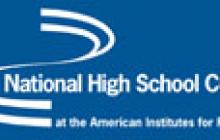Meeting the Needs of Significantly Struggling Learners in High School: A Look at Approaches to Tiered Intervention
![]() This report outlines the opportunities and challenges presented by Response to Intervention (RTI) at the high school level. To date, the focus on RTI, a diagnostic tool and tiered approach consisting of customized student instruction, has been primarily on the elementary school level. Interest in the approach has increased as a result of the regulations outlined in the Individuals with Disabilities Education Improvement Act (IDEA 2004), but much is still unknown about this work at the high school level.
This report outlines the opportunities and challenges presented by Response to Intervention (RTI) at the high school level. To date, the focus on RTI, a diagnostic tool and tiered approach consisting of customized student instruction, has been primarily on the elementary school level. Interest in the approach has increased as a result of the regulations outlined in the Individuals with Disabilities Education Improvement Act (IDEA 2004), but much is still unknown about this work at the high school level.
The report provides an in-depth look at the implementation and structural issues, as well as the needed support required to successfully institute RTI on the secondary school level. Effective tiered intervention strategies depend on accurate diagnostic information and data about what is working or what is not working for students and what new adjustments need to be made in the learning environment. RTI involves close monitoring of students and therefore can serve as an effective tool in identifying learning disabilities.
The report defines two RTI models (standard treatment protocol and problem-solving approach), explores benefits and challenges faced at the high school level, shares a snapshot of implementation at the high school level, and outlines
the necessary resources needed to support this work. In addition, the report outlines considerations unique to high school in regard to RTI including:
- Identifying screening and progress monitoring tools for high school level students across subject areas;
- Utilizing high school appropriate intervention models that work across subjects;
- Designing a program structure that pays careful attention to the urgency for identifying learning
- disabilities and other learning issues so late in the educational pipeline;
- Developing an approach for high school students that addresses the problem of inappropriate
- identification, particularly of English learners;
- Examining the changing roles for general and special education teachers;
- Determining universal instruction across content areas;
- Ensuring new structural supports for professional collaboration, as high schools often present a
- unique challenge due to traditional departmental structures;
- Offering ongoing professional development; and
- Expanding parent communication to build a common understanding of the approach.
